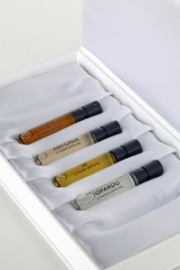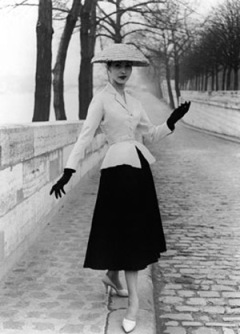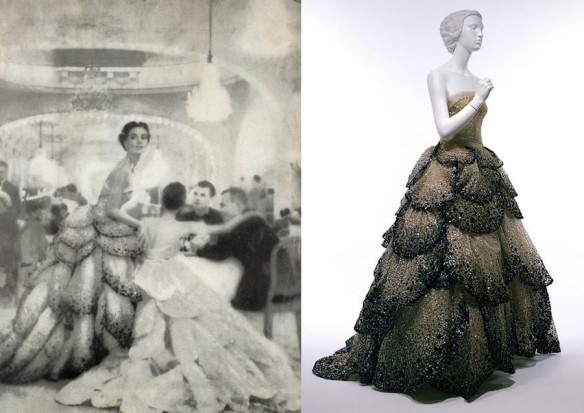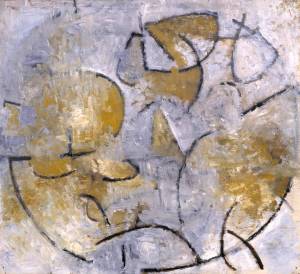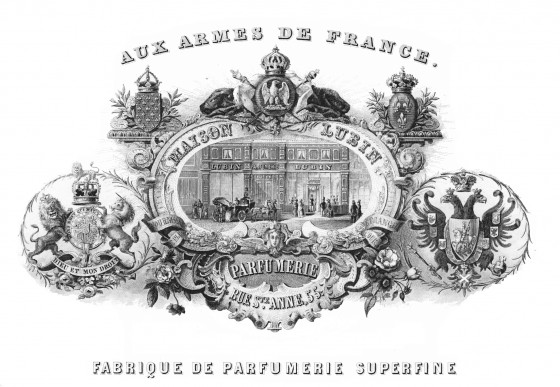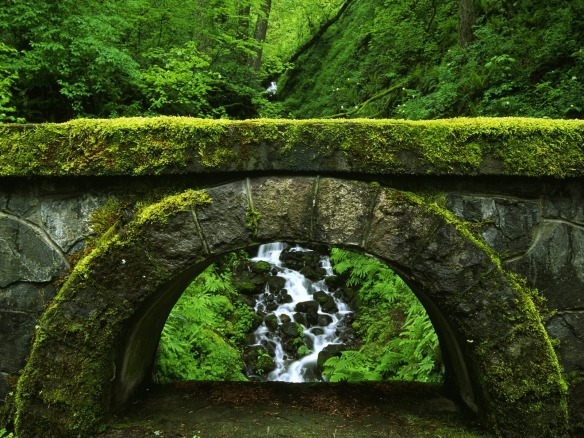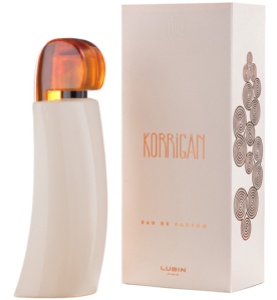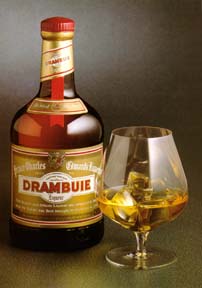“Exquisite.” That word just blew through my mind the minute I put on Opardu by the luxury niche perfume house, Puredistance. An explosion of lilac, purple and white filled my eyes, I moaned a little, and then I sprayed on some more. I barely restrained myself from putting on more than the usual, standard testing amount; I would have bathed in Opardu if it had been possible. It is, quite simply, spectacular.
Puredistance is a small brand whose perfumes typify the luxury, elegance, and restrained richness in the best style of classic perfumery. Each of their fragrances is made by a Master Perfumer and is an extrait de parfum blended at a whopping 25-32% concentration from the finest perfume oils. Opardu for Women is no exception. In fact, it tops the numbers at 32% concentration; I can’t think of a single modern perfume that is anywhere close to that degree of pureness.
Released in 2012, Opardu was created by Annie Buzantian and is classified on Fragrantica as a “floral woody musk.” Puredistance’s description for the perfume explains both its inspiration and its overall essence:
The word OPARDU expresses a deep longing for the bygone days of dreamy opulence and true romance. Puredistance OPARDU has an instant hypnotizing effect that revives memories of love, romance and seduction. Be prepared for a perfume that will bring you back to the velvety nightlife of Paris in earlier days.
The Kees Van Dogen bouquet in the middle which served as the inspiration for Opardu. Source: Puredistance website.
Central to the ‘feeling’ of OPARDU have been the expressive paintings of Kees van Dongen, in particular one of his illustrations for the book ‘PARFUMS’ by Paul Valéry, published in 1945 in a limited edition of 1000.
When Jan Ewoud Vos [the founder of Puredistance] showed this illustration of Kees Van Dongen – a rich and lush bouquet of flowers – to Annie Buzantian, the famous Master Perfumer from New York, she instantly fell in love with it. She also felt this nostalgic feeling for the early years of the last century; the golden age of perfumery.
According to Wikipedia, Kees van Dogen (1877-1968) was a 20th-century Dutch painter and one of the Expressionist Fauves (like Matisse) who “gained a reputation for his sensuous, at times garish, portraits.”
 Opardu definitely evokes the feel of “bygone days of dreamy opulence.” Its notes are as follows:
Opardu definitely evokes the feel of “bygone days of dreamy opulence.” Its notes are as follows:
Tuberose absolute, gardenia, Bulgarian rose, purple lilac, carnation, jasmine absolute, heliotrope, cedar wood.
The perfume opens on my skin with a veritable feast of purple. Stunningly beautiful lilacs — something I don’t come across often in perfumery — fill the air with a sweet, heady, but airy aroma. The scent has a delicacy which can only be described as exquisite.
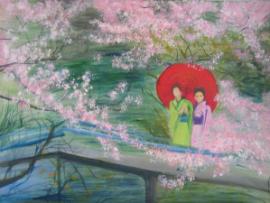 It takes me to Japan, evoking the most willowy, delicate geisha in robes of the richest, embroidered purple silks, the merest whisper of transparent, white gauze at the base of her swan-like neck, the most feminine touch of pale pink on rosebud lips, as she walks daintily in a garden filled with the loveliest of spring blossoms and lush, velvety white flowers. There is wealth and luxury behind the notes, but also a supreme sophistication tied to endless femininity.
It takes me to Japan, evoking the most willowy, delicate geisha in robes of the richest, embroidered purple silks, the merest whisper of transparent, white gauze at the base of her swan-like neck, the most feminine touch of pale pink on rosebud lips, as she walks daintily in a garden filled with the loveliest of spring blossoms and lush, velvety white flowers. There is wealth and luxury behind the notes, but also a supreme sophistication tied to endless femininity.
There is a fragility to the delicacy of Opardu, but this would be misleading. In the opening hour, Opardu is a strong scent that belongs with a woman who is confident enough to flaunt her feminine nature without fears of being seen as a simpering girl. I cannot fully explain why the perfume summons such feelings in me — but it does. This is seriously classique, haute elegance that calls back to the golden age of perfumery.
Tuberose and lush gardenia peek out behind the facade of lilacs, but there is also a sense of violets, perhaps something like the richest, most velvety African violets, unfurling their delicate richness in the night air. There is also a lovely sweetness from the jasmine absolute; while it is heady in that first hour, it never smells sour, over-ripe or plastic-y. Like everything else about the perfume, it is rich but restrained, sweet, and endlessly airy.
Despite the very Spring-like visuals, the scent calls to mind the richness of night-blooming flowers. And, despite the gauzy, airy feel of delicate femininity, that lushness simultaneously evokes sensuality and an almost feline sensuousness. Opardu should not be judged by the delicate surface. Underneath the robes of that prim, restrained, endlessly dainty geisha is a woman who revels in her body and in her power to seduce. And that power is almost hypnotic. Puredistance wasn’t exaggerating when they described Opardu as having “an instant hypnotizing effect that revives memories of love, romance and seduction.” You cannot stop sniffing your wrist, as you are transported back to more golden, more elegant, more refined times. Perhaps Japan of the geishas, perhaps the elegant capitals of Europe in the 1920s. Whatever it is, Opardu is simply spectacular.
As time passes, the notes change a little. At the thirty minute mark, lilacs and gardenia dominate, followed, in order, by tuberose, jasmine and rose. Those of you who are terrified of tuberose or jasmine should not worry; this is not an indolic perfume by any means. It is definitely not Fracas! Later, midway during the second hour, the perfume transforms into a very woody scent of slightly peppery cedar, conjoined with lilacs and a light musk. By the fourth hour and until the end, Opardu returns to its purple roots with soft lilac and violet overtones over a base of heliotrope. The latter has a scent between vanilla or almonds with a slightly powdery element. According to Fragrantica, heliotrope has been “proven to induce feelings of relaxation and comfort” — and I think it is definitely true here.
I love Opardu, but it is not perfect. I was enormously disappointed in the sillage which is so soft and low that Opardu was essentially a skin scent on me after the first hour. (And I sprayed on a good 3 sprays from the little sample that I had!) Even during that opening hour, it hovered maybe three inches above the skin. Afterwards, I had to bring my nose right to the skin to smell the fragrance. By the fourth hour, I actually thought it was close to gone, but Opardu has surprising persistence. Again and again, I thought it had vanished, only to be surprised when, later, I detected a sudden, noticeable patch of lilac. My notepad is covered with times and scribbles of “gone,” only to be scratched out with later times and “it’s still there!” The perfume seems to perform some sort of ghostly vanishing act, disappearing, reappearing, and so on. And all of this occurred on both occasions when I tested Opardu. I always make it very clear that I have perfume-consuming skin and endless problems with longevity, but I do not usually have problems with projection.
I found it especially frustrating in the case of Opardu because it is simply one of the best florals that I have come across in years. I cannot emphasize enough just how exquisite it is in that opening hour. The word “beautiful” does not do it any justice, and even “exquisite” may not be enough. I wasn’t as hugely enamoured by the rest of the perfume’s development which was lovely, but which didn’t reach the heights of that spectacular opening with its unbelievably delicate beauty, underlying lushness and enormous sophistication.
Don’t mistake my meaning — Opardu is beautiful through and through, but that opening hour positively gave me whiplash in terms of just how magnificent it was. I was hypnotized, entranced, almost moaning out loud, and kept smelling my arm like someone under a spell. Thereafter, it was very pretty, but it wasn’t exquisite. I have to wonder how much the incredibly restrained sillage contributed to that feeling. Perhaps if that lilac-white flowers combination had remained as strong throughout the perfume’s development, the spell would have remained. As it was, the lightly peppered cedar and musk phase was pleasant, and the return of the lilacs at the very end made me very happy, but it was all a little too sheer and microscopic for my personal tastes.
That minimalistic sillage makes it hard for me to assess just how long it lasted on me. I actually smelled faint remnants of it on tiny patches of my arm well after 13 hours on one of my tests! Yet, that ghostly act makes me think that 8-9 hours may be a better estimate for the full perfume, as opposed to a few random, dime-sized spots here and there. I have tried to find reviews talking about Opardu’s sillage and duration on others, but I haven’t been successful. The few votes on Fragrantica seem to range all over the place for longevity, while the majority of people (3, in this case) have voted the sillage as “soft” which is the lowest ranking available. One commentator (“ladykarl“) seemed to indicate that the dry-down phase began on her after four hours:
Opardu is very beautiful as the mature ultra femme superfloral that it is. Would be lovely to the opera or an event where dressing up fine is the standard. Lilacs in the front; tuberose in the back (nice combo) The drydown is much less floral; woodsy which makes the later part of the scent (four hours in) much more laid back and well suited for regular life. If i had the right lifestyle i would definitely wear this.
Apart from the time factor, I don’t think that her brief assessment begins to do Opardu justice. I actually think one of the best assessments of the fragrance — out of the many, many positive ones out there — comes from Luckyscent itself:
Oh to be a madcap heiress, sliding through the crowd in a bias–cut satin gown and glittering pumps, a champagne cocktail in one hand and a leash leading to some exotic pet in the other. Your brows are perpetually arched as you scan the crowd for a dashing aviator or an adorably bookish professor to seduce. What scent are you wearing? Opardu, of course! Well, historically speaking, you wouldn’t be – but in the glorious art deco movie set of our minds, you are. Because Opardu is not about the past, it is about a fantasy of the past, just like our daydreams. It evokes the enchantment and glamour of a bygone era, but still feels modern.
[¶] The opening is especially evocative of another time and it is pure swank – like an expensive gift from a rich suitor, conjuring up images of mirror-topped vanities and red lipstick. This develops into an opulent floral featuring luminous gardenia, heady tuberose, piercing jasmine, and velvety rose. The mix is full and lush and there is the seductive thrum of cedar wood underneath it all. You might guess that the lilac and heliotrope would be overwhelmed by all of this and just sit off to the side and whisper to each other – but they are beautifully present, adding delicacy and charm as they put the twinkle in our saucy heroine’s eye. As the scent wears on, the more ethereal elements continue to shine and the overall effect is absolutely lovely.
For those who love soft florals and who want an unobtrusive perfume without enormous projection, then Opardu would be ideal. Even others who prefer greater sillage may be lucky and should try it — after all, I have very peculiar skin! For myself, in a perfect world where I had endless money, I would buy Opardu in a heartbeat — even with my sillage issues — because this is one scent where I would be perfectly happy to reapply every few hours simply to get that stunning, mesmerizing, hypnotic opening. Unfortunately, I’m not sure how practical that would be in reality, given the cost of the fragrance.
Opardu is not cheap but, thankfully, Puredistance has just launched a much more affordable pricing plan. All four of the brand’s perfumes now come in a 2 oz/60 ml bottle of pure parfum extract that costs $330 or €275. Previously, a full bottle of Opardu was only available in a 3.4 oz/100 ml size that cost $590, while a small 17.5 ml/ 0.59 fl. oz sized spray (essentially, a travel-sized mini) is $198.
I realise that these prices are high. But, first, let me remind you that we’re talking about pure parfum extrait at 32% — something that is almost unheard of. Second, price is a very subjective thing. Lastly, the company has done a very rare thing: it heard the whimpers about the prices for its perfumes, and made every attempt to offer a more accessible, reasonable alternative in both size and cost. My God, how rare is it for an haute-anything company — perfume, fragrance, fashion or something else — to actually listen to its consumers and offer something less expensive?
I loved Opardu’s opening. I loved it with the passion of a thousand suns. I want to be wrapped up in its cocoon forever and to have its magical tendrils weave their spell around me as I sleep. It makes me feel so stunningly beautiful and delicate; and it triggered feelings of pure joy and peacefulness. I could really rave about it morning, noon and night. Whether the rest of the perfume’s development matches that initial magic is something that is up to you to decide. If you love delicate, feminine florals, then you must try this perfume. It’s really as simple as that.
Disclosure: My small vial was provided courtesy of Puredistance. As always, I make it very clear to any company who sends me things, upfront, that there is no guarantee of a positive review, or even of a review at all. I also make it clear that I will always be completely honest about a perfume, as my first obligation is to my readers.
DETAILS:
Cost & Availability: Opardu is available in a variety of different sizes and forms on the Puredistance website and I believe shipping is free to the U.S. (and to an EU nation). You can buy a 17.5 ml travel size spray for $198 or €168. The small bottle is 60 ml/ 2 oz and costs $330, while the large bottle is 3.4 oz/ 100 ml and costs $590. However, you can also buy Opardu as part of a sample Gift Set of four Puredistance perfumes (Opardu, I, Antonia, and M) with each sample being 2 ml. The whole set costs $59 and includes free shipping. Opardu is also available from Luckyscent in all available sizes at the same price (but without free shipping), along with a 0.7 ml sample vial for $6. In the UK, Puredistance fragrances are available at Roja Dove’s Haute Parfumerie division on the 5th floor of Harrods. Elsewhere, you can use Puredistance’s Store Locator which lists retailers from Australia and New Zealand to Austria and Russia. Surrender to Chance also sells it and prices start at $3.99 for a small 1/4 of ml vial, $7.98 for a 1/2 vial and $15.96 for 1 ml.








